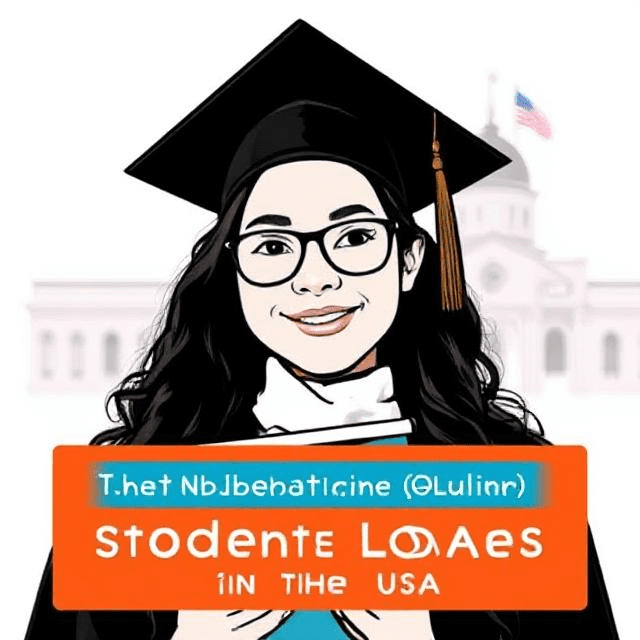Introduction to Student Loans and MOHELA
Student loans are financial instruments designed to assist individuals in funding their higher education, covering expenses such as tuition, fees, and living costs. Given the escalating costs of education, many students and their families turn to loans as a critical resource. Among the entities that manage these loans, the Missouri Higher Education Loan Authority (MOHELA) plays a significant role. Established to provide support to students and educational institutions, MOHELA has become a key player in the landscape of student financing.
MOHELA’s primary purpose is to facilitate the management and repayment of student loans. As a loan servicer, MOHELA aids borrowers by providing guidance on various repayment options, helping them understand the implications of each choice. The services rendered by MOHELA include loan consolidation, eligibility determinations for federal repayment programs, and assisting borrowers in navigating their financial obligations. This support is crucial for students who may find themselves overwhelmed by the complexities of student loans.
In terms of the types of loans serviced by MOHELA, they predominantly manage federal student loans, including Direct Subsidized and Unsubsidized Loans, as well as PLUS Loans. Additionally, MOHELA handles private student loans, which are typically offered by financial institutions. The distinction between these loan types lies in their terms and eligibility requirements. Federal loans generally come with more favorable repayment terms and potential for loan forgiveness, while private loans may have variable interest rates and a more rigid repayment structure.
Overall, MOHELA’s function in the student loan ecosystem is multifaceted, aiming to support borrowers throughout their educational journey and beyond. Understanding the role of MOHELA is essential for anyone navigating the challenges of student loans.
Types of Student Loans Offered
When considering education financing options, it is essential to understand the different types of student loans that MOHELA manages. MOHELA, as a servicing agency, primarily handles federal student loans, but it also provides information about private and state-specific loans. Each of these loan types has unique features, interest rates, and eligibility requirements that potential borrowers should be aware of.
Federal student loans are often the first choice for students. These loans, which include Direct Subsidized Loans, Direct Unsubsidized Loans, and PLUS Loans, typically offer lower interest rates and more flexible repayment options compared to private loans. For instance, Direct Subsidized Loans are available to undergraduate students demonstrating financial need, while Direct Unsubsidized Loans do not require a demonstration of financial need and are available to both undergraduate and graduate students. The interest for Subsidized Loans is paid by the government while the student is enrolled at least half-time, making them a more affordable option for many.
Private student loans, on the other hand, are offered by banks, credit unions, and other financial institutions. These loans may have variable interest rates and are determined by the borrower’s credit history and earnings potential. While private loans can fill gaps in funding for education, they may come with fewer borrower benefits, such as deferment options or income-driven repayment plans, which are generally available with federal loans.
State-specific loans may also be available in certain areas, designed to support students attending in-state institutions or pursuing particular fields of study. These loans can offer competitive interest rates and are typically more accessible for residents. However, eligibility and terms may vary significantly between states.
In summary, understanding the diverse types of student loans offered by MOHELA, including federal, private, and state-specific loans, is crucial for students and their families. Each option has pros and cons which should be carefully considered in relation to individual circumstances and financial goals.
How to Apply for a Student Loan with MOHELA
Applying for a student loan through the Missouri Higher Education Loan Authority (MOHELA) can be a straightforward process if you follow the necessary steps. To begin, it’s crucial to understand the eligibility criteria for obtaining a student loan with MOHELA. Generally, applicants must be enrolled or accepted for enrollment at an eligible college, university, or vocational school and demonstrate financial need, although some loan types may not require this criterion.
Once you have confirmed eligibility, collecting the required documentation is the next step. Typically, this includes your Social Security number, income information, and details regarding the school you will be attending. Additionally, it may be helpful to have documents demonstrating your family’s financial situation, such as tax returns or pay stubs.
The application process itself often starts with the completion of the Free Application for Federal Student Aid (FAFSA). This form is essential, as it enables you to be considered for federal student loans, grants, and other financial aid opportunities. Once your FAFSA has been processed, MOHELA will receive your information and may contact you for further documentation or to provide you with your loan options. It is vital to check your MOHELA account for any updates regarding your application status.
To enhance the chances of successful loan applications, consider these tips: provide thorough and accurate information on your forms, submit all documentation promptly, and remain proactive in following up on your application’s progress. Furthermore, if you encounter challenges or have questions, reaching out to MOHELA’s customer service can provide clarity. Addressing common concerns, such as understanding loan terms or repayment options, may help in making informed decisions regarding your financial future with student loans from MOHELA.
Managing Your Student Loan Payments
Effectively managing student loans is crucial for ensuring financial stability throughout your academic career and beyond. MOHELA, one of the leading servicers of federal student loans, offers a variety of options tailored to help borrowers manage their student loan payments. Understanding these options is vital for maintaining a healthy financial outlook.
One of the first considerations for any borrower is selecting an appropriate repayment plan. MOHELA provides several repayment plans including the Standard Repayment Plan, Graduated Repayment Plan, and Income-Driven Repayment Plans. Each plan has its own set of features designed to meet different financial situations. For instance, the Income-Driven Repayment Plans can be particularly beneficial for those whose income may not cover standard payments, as these plans adjust monthly payments based on income and family size.
After graduation, borrowers typically enter a grace period, which lasts for six months for federal loans. During this time, students are not required to make payments. However, interest may still accrue, and understanding the implications of this can significantly affect future payments. If borrowers find themselves unable to make payments even after the grace period, MOHELA also offers options for deferment and forbearance. Deferment allows borrowers to temporarily pause payments under specific circumstances, while forbearance is a more general suspension of payments for a limited time due to financial hardship.
It is crucial to communicate with MOHELA if there are any issues such as missed payments. To avoid further complications, borrowers should consider setting up autopay or reminders for payment dates. Tools provided by MOHELA can also help track due dates and remaining balances, making repayment more manageable. Being proactive in managing student loans, including those serviced by MOHELA, is essential for long-term financial health and achieving freedom from debt.
Understanding Loan Servicing and Customer Support from MOHELA
MOHELA, or the Missouri Higher Education Loan Authority, plays a pivotal role in the loan servicing sector, particularly for borrowers managing their student loans. Their mandate extends beyond merely collecting payments; it encompasses providing comprehensive assistance to help borrowers navigate the complexities of repayment. A crucial aspect of this service is recognizing that each borrower’s journey is unique, which necessitates tailored support and guidance throughout the loan repayment process.
To facilitate effective communication, MOHELA offers multiple contact methods, ensuring that borrowers can easily reach out for assistance. Students can connect with customer service representatives via phone, secure messaging through their online account, or through email. Each channel is designed to cater to different preferences, allowing borrowers to choose the method that best suits their needs. Furthermore, MOHELA’s website hosts an extensive FAQ section where students can find answers to common inquiries, thereby empowering them with the knowledge required to manage their loans independently.
MOHELA places a strong emphasis on enhancing borrower satisfaction. The organization regularly conducts surveys to gauge the effectiveness of their services and identify areas for improvement. This commitment to ongoing enhancement demonstrates their dedication to providing exceptional support throughout the repayment journey. Additionally, MOHELA hosts webinars and workshops aimed at educating borrowers about loan repayment options, forgiveness programs, and financial literacy. Such initiatives not only serve to inform students but also foster an environment of trust and transparency.
In essence, borrowing from MOHELA goes beyond securing funds for education; it involves a supportive partnership that prioritizes borrower experience and satisfaction. As students embark on their repayment journeys, accessing these invaluable resources can significantly impact their overall financial wellness and peace of mind.
Navigating Loan Consolidation and Refinancing
Managing student loans can often feel overwhelming, especially for those with multiple loans serviced by MOHELA. Fortunately, options such as loan consolidation and refinancing can provide a clearer path to financial stability. It is essential for borrowers to understand these processes and consider their benefits and drawbacks to make informed decisions regarding their debt.
Loan consolidation refers to the process of combining multiple federal student loans into a single loan, which is particularly relevant for those with loans serviced by MOHELA. This can simplify payments and can even lead to a lower monthly payment. When loans are consolidated, borrowers receive a fixed interest rate determined by the weighted average of the existing loans. One of the primary benefits is the potential for access to additional repayment plans, such as income-driven repayment plans, which could ease the financial burden on borrowers. However, it is crucial to note that consolidating loans might result in the loss of certain borrower benefits, such as interest rate discounts or loan forgiveness programs associated with specific loans.
On the other hand, refinancing involves taking out a new loan to pay off existing loans, including those serviced by MOHELA, with the intent to reduce the interest rate. This may be beneficial for borrowers with a strong credit history or a stable income, as they might qualify for lower rates, potentially saving them significant amounts over the life of the loan. However, it is essential to highlight that refinancing federal student loans converts them into private loans, which means losing access to federal protections, such as deferment and forbearance options. Moreover, borrowers may need to shop around and compare various loan offers to achieve optimal terms.
Ultimately, whether consolidating or refinancing student loans with MOHELA is the right choice will depend on individual circumstances. Borrowers must weigh the benefits against the potential risks to navigate their financial future effectively.
Student Loan Forgiveness Programs with MOHELA
For borrowers managing their student loans through MOHELA, there are several student loan forgiveness programs available that can significantly alleviate the financial burden of educational debt. Understanding these programs is crucial to maximizing potential financial benefits. The most notable among these is the Public Service Loan Forgiveness (PSLF) program. This program is designed for individuals who work in qualifying public service positions, allowing them to potentially have their remaining loan balance forgiven after making 120 qualifying payments under a repayment plan.
Eligibility criteria for PSLF include having Direct Loans, which are the type of loans that MOHELA services, and being employed full-time by a government or not-for-profit organization. Borrowers must also be enrolled in a qualifying repayment plan, such as an income-driven repayment plan. To apply for this program, borrowers can use the Employment Certification Form, which helps track qualifying payments and confirm qualifying employment. It is advisable for borrowers to submit this form annually or whenever they change employers to maintain accurate records.
In addition to PSLF, MOHELA also supports the Teacher Loan Forgiveness program, aimed at educators who work full-time for five consecutive years in low-income schools or educational service agencies. Eligible teachers can have a portion of their loans forgiven, with the amount depending on the subject taught and the duration of their service.
Furthermore, the Income-Driven Repayment (IDR) forgiveness allows borrowers to have their loans forgiven after 20 to 25 years of qualifying payments, depending on the repayment plan selected. Borrowers must enroll in an IDR plan and recertify their income and family size annually to maintain eligibility.
To explore these options further, borrowers should contact MOHELA directly or visit their website for detailed information on eligibility, application processes, and required documentation.
Keeping Up with Regulatory Changes and Resources
Understanding student loans, particularly those serviced by MOHELA, requires borrowers to stay informed about the myriad of regulatory changes that can affect their repayment options, interest rates, and overall financial responsibilities. Regulatory changes can often arise from new federal legislation or policy shifts, impacting how loans are serviced and what options are available for borrowers. Therefore, being proactive in this evolving landscape is crucial to ensuring one’s financial well-being.
MOHELA actively plays a role in disseminating important updates regarding these changes to its borrowers. By providing comprehensive resources such as newsletters and blog posts, MOHELA enables borrowers to access essential information that can affect their student loans directly. These resources can offer insights into recent regulatory changes, explain their implications, and provide guidance on how to navigate such shifts effectively.
Borrowers are encouraged to subscribe to MOHELA’s newsletters, which are a valuable tool for staying informed. These newsletters frequently outline upcoming changes in regulations, enhancements in loan repayment programs, and any relevant updates on student loan forgiveness options. Additionally, the MOHELA blog serves as an accessible platform for deeper discussions about the student loan landscape, highlighting best practices for managing loans, understanding borrower rights, and optimizing repayment strategies.
Moreover, MOHELA regularly updates its official websites and platforms with crucial information regarding policy changes. Utilizing these resources allows borrowers to remain abreast of the latest trends in student loans, ensuring they are never caught off guard by significant alterations that could affect their financial obligations. By remaining actively engaged with these educational tools, borrowers can better manage their student loans with MOHELA and navigate the complexities of regulatory changes with confidence.
Conclusion: Making Informed Decisions About Student Loans
In navigating the complexities of student loans, particularly through MOHELA, it is crucial for borrowers to equip themselves with well-rounded knowledge and resources. Understanding the distinct types of student loans available and how MOHELA can assist in managing these loans is paramount for effective financial planning. Throughout this guide, we have explored the multiple facets of student loans, from repayment options to the significance of staying updated on policy changes. Each of these elements plays a vital role in making informed decisions.
One critical takeaway is the importance of proactive communication with MOHELA regarding one’s loans. MOHELA provides various resources, including online portals, customer service representatives, and educational tools that can help borrowers stay informed about their repayment plans and any potential forgiveness options available to them. Utilizing these resources can enhance one’s ability to manage student loans effectively, reducing financial strain and preventing potential pitfalls.
Moreover, being informed about one’s rights and responsibilities as a borrower cannot be overstated. Knowledge of how interest rates work, eligibility for deferment, and other repayment strategies can empower students to take control of their financial futures. Aspects such as budgeting and financial literacy also significantly impact one’s capacity to navigate student loans successfully.
Ultimately, managing student loans through MOHELA is within reach when borrowers are supported by the right information and tools. Therefore, readers are encouraged to seek additional assistance if necessary and remain vigilant in understanding their financial commitments. With a proactive approach, managing student loans effectively is certainly achievable.
Share this with your friends and family!

























